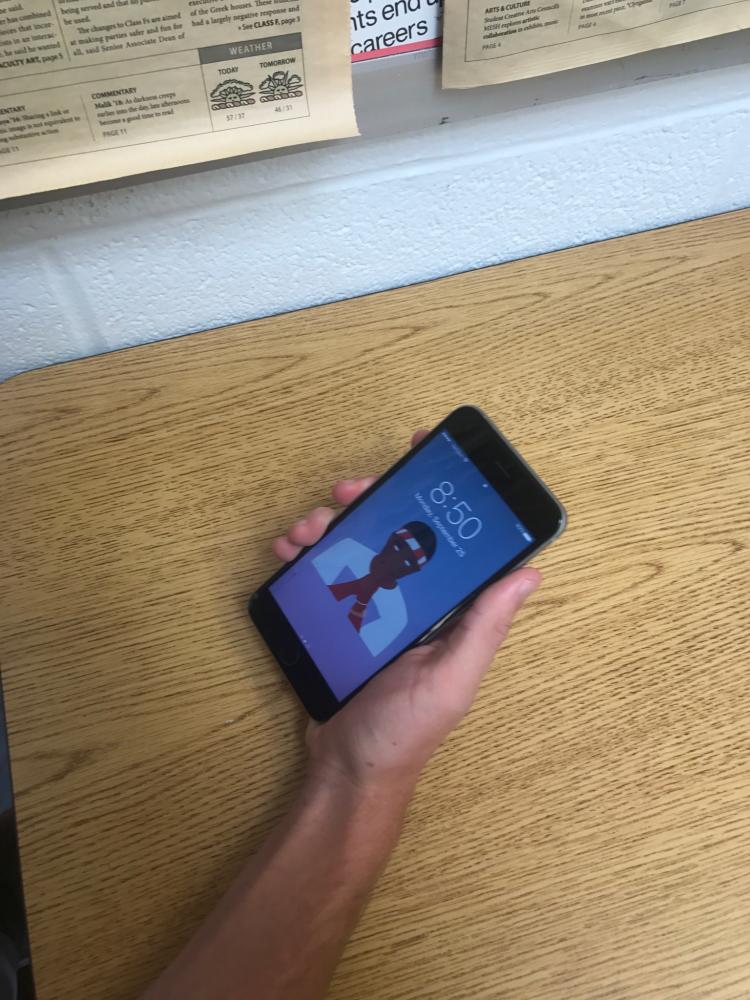Health Risks of Social Media
Senior Mike Quinn admires his Frank Ocean iPhone lockscreen
With technology paving the way of the future, social media networks like Instagram and Snapchat create an empire for adolescents who look for ways to escape their realities by joining the virtual world. Despite the supposed beneficial impact of providing sources of entertainment and high-speed communication, these online networks also pose a potential health risk for today’s youth: the weakening of social skills, depression, and the spreading malady that is cyberbullying. Teens are warping their minds with false interpretations of reality as their peers advertise their social lives by exaggerated and often “saturated” means.
77% of teenagers use cell phones, and it is safe to assume that the majority of them are texting and/ or are involved with social media. The main problem that deteriorates their mental health is the jealously that sparks in so many young people as they see their peers posting images and videos showcasing the highlights of their lives. This envy is created mostly by Facebook users, and is directly related to symptoms of depression (Culture and Youth). Even though day-to-day life isn’t lived through a Valencia lens, children and young adults who envy their peers are seeing themselves differently and negatively. Self-image is constantly being criticized by oneself and by others through all social media platforms, being repeatedly torn down. This fragility of the mind leaves young adults unprepared for the real world after school, where they have to face criticism on a daily basis in the work environment.
Another emotional factor that creates a dangerous environment for adolescents is the ongoing presence of cyberbullying. An outstanding 36% of parents in the US fail to limit or monitor their children’s cell phone usage, which puts their children at the risk of being verbally abused or abusive on the internet without getting caught. 53% of teenagers reported being cyberbullied, and 33% have been threatened online. (No Bullying). Not only are teenagers being abused and threatened on the internet, but 11% of them reported having embarrassing pictures or photos harmful to their reputations and futures of themselves taken and shared without their permission.
As far as physical inflictions go, one major problem induced by cell phones is the UV light rays emitted from the screens that hinder melatonin from the body and cause problems with teens’ ability to fall asleep and the quality of their deep sleep. This night of restlessness that so many face could be a result of using their phones and staring at their phones’ bright lights for too long before going to bed. In addition to affecting one’s cognitive processes by depriving him or her of quality sleep, the 30% of teenagers that reported having concentration problems promptly after using social media. (Culture and Youth). One can imagine these concentration problems only heightening their failure to fall asleep when phones are used right before or in bed.
With technology advancing every year, only more and more teenagers will face social, mental, and physical problems if nothing is done to stop it. Actions can be taken at home with parental monitoring of cell phone use, social media platforms can establish more strict regulations that ban negative speech among users, and remove inappropriate content from their sites so cyberbullying can be diminished. In the words of songwriter Katherine Jenkins, “children should be able to live a life free from bullying and harassment and it is time that we all took a stand against this.”


Gabriel Silliman • Nov 26, 2017 at 5:37 pm
Although I agree that cell phones are clearly a major distraction from daily life and often cause teens to get less sleep, I don’t think that cyberbullying is as big of a problem as it is made to be seen. I personally don’t think that Snapchat or Instagram solely cause many people to become depressed except in very extreme cases. As a user of both, I can’t say that I have ever seen someone’s personal appearance ever being criticised by other people in either one of these apps. Ultimately, I think that social media is often portrayed as a horrible thing that is the cause of all of the problems of teenagers, when ultimately—although I wouldn’t say it has an overwhelmingly positive influence on teenagers’ lives—social media is only one of many factors that play into the mental health problems that are consistently rising among teens and cannot be solely blamed.